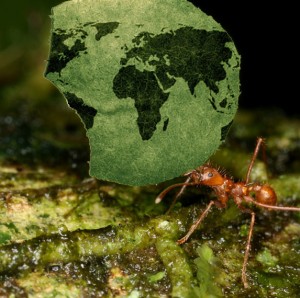Using Ants to Map Patterns of Diversity
They account for more than 80 percent of Earth’s species, but insects merit little respect in either conservation or global diversity studies.
NC State biology professor Rob Dunn and postdoc Michael Weiser, along with Benoit Guénard, a former NC State Ph.D. student who now works at the Okinawa Institute of Science and Technology, want to change that, specifically by tracking ants.

While perhaps not as sexy as some mammals and plants, ants play important roles in shaping ecosystems and interacting with other organisms. Ants are probably the best understood insect, which is a backhanded way of saying that they’re not very well understood. So Guénard, Dunn and Weiser set out to map ant diversity around the globe.
Using two different predictive models, the researchers found that in some places – the so-called “hotspots of discovery” like northeast Brazil, southern Mexico, parts of west and southeast Africa, and parts of Southeast Asia – there was much less ant diversity than expected. The results of the study were published online in Proceedings of the National Academy of Sciences this week.
Many of these hotspots of discovery are plagued by deforestation, including places like Togo and Burundi, which lost 58 percent and 41 percent of their forests, respectively, between 1990 and 2010. Predictive models suggest Togo and Burundi should each contain more than three dozen undetected ant varieties.
The researchers say that the regions with less ant diversity than predicted should receive conservation priority and a lot more biological exploration.
- Categories:


